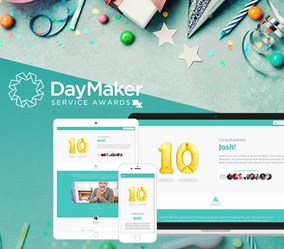4 Ways to Avoid Shipwrecking Your Recognition Program
Jan 07, 2016
Written by: Tim Houlihan
(View Author Bio)
Here are four ways to ensure you don’t find your own recognition program shipwrecked.

Picture this – you’ve just successfully launched your new recognition program. You’ve invited senior leaders to speak at the kick-off celebration, the program website is up and running, your managers have clear expectations of their role in driving employee engagement and you’ve got a great reward assortment in place. On top of that, you have a safety net: your recognition partner has assured you that they will be there to support you through any rough waters. Now it’s time to sit back and relax while your employees flock to the website and your employee satisfaction scores soar.
But wait – not everyone is flocking to the website. Manager participation is on the rocks. Very few are engaged enough to keep the program afloat. There are rumblings from the employees over some issues with gift card fulfillment. Senior leadership has asked you to demonstrate the ROI of “your” program. And to make matters worse, your trustworthy recognition supplier has moved on to the next sale, leaving you high and dry.
This scenario may seem unlikely but it happens more often than you’d think. Here are four ways to ensure you don’t find your own recognition program shipwrecked.
1. Prepare a long-term communication strategy, not just a short-term launch plan. All too often, money, people and focus are solely dedicated to building a creative launch campaign. Don’t get us wrong – a successful launch is critical but just as important (if not more so) is having a sustainable plan for the entire length of the program.
This should include timely updates to the program website content and frequent push communications to keep the program top of mind. Announce new features, share best practices, recognize achievements or provide activity stats for your program. Without these ongoing efforts, your program is dead in the water.
2. Don’t assume managers will propel the program forward.
Managers are extremely busy and to assume they will automatically support a new recognition initiative is unrealistic. You’ll find some managers with passion for employee recognition will automatically embrace the mission but there will also be skeptics. These managers will offer a form of an “it’s not my job” mentality and curtail the program’s progress. They won’t do it out of rebellion but rather a lack of information, comfort and confidence in their role to drive employee engagement. Help them get on board (and stay there) with regular communication reminding them what’s in it for them.
Training managers with easy-to-use tools upon program launch is critical. Ongoing support should be provided to the managers who need help by creating local recognition champions, giving them on-demand access to program guidance and frequently sharing tips and best practices for how best to be a recognition leader. And don’t hesitate to remind your managers of the benefits of engaging
their team.
Your program website should be smart enough to alert, remind and prompt managers regarding action items they need to perform to drive program activity.
3. Make sure you have a comprehensive rewards solution.
Your award collection needs to be diverse and inclusive of gift cards, luxury merchandise, airline tickets, hotels, tours and transfers, concert and sporting event tickets and digital book, music and movie downloads. All of these items are effective motivators for participation. Occasionally changing the award selection is a great way to keep things fresh and demonstrate your organization’s commitment to giving employees access to the latest and greatest stuff.
Issues with award selection, fulfillment or satisfaction should be taken seriously and addressed quickly. Negative experiences can pollute the water cooler talk and harm program adoption and engagement. Make sure you have a reliable customer service support infrastructure provided by your recognition supplier.
4. Establish your program goals and success measures up front.
It’s important not to overlook or bypass the establishment of key performance metrics that you will use to validate your program’s success from day one. These should be established before or during the onboarding process.
A proper design session should incorporate definition of the program rules and establishment of the analytics, tools and timing to be used for reviewing ongoing program activity. Attempting to complete this task once the program has already been launched is a recipe for disaster. Remember, you can always adjust your metrics over time as you learn of new information but if you launch with no definitive determinants for what will define your program’s success, how will you know when you get there?
Introducing a new program to an organization (and getting it to stick) is no small feat. Anticipating challenges you may face and proactively addressing them will help make the road to program adoption and engagement that much easier.
Discover successful recognition.
Submitting your information allows us to reach out to you in the future.













